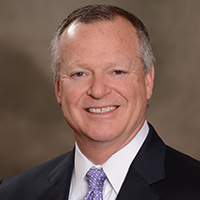From ‘necessary evil’ to absolutely necessary: the evolution of healthcare finance

According to the late HFMA luminary Robert M. Shelton, hospital administrators viewed accounting as a “troublesome and necessary evil” back in the 1930s. I’ll take Shelton’s word for it. (I should note that the term “bean counter” never appears in From Acorn to Oak, Shelton’s account of the first 45 years of HFMA history).
After the societal upheavals wrought by the Great Depression and World War II were over, a few leading hospital accountants believed the time was ripe for change in their profession. In 1945, William Follmer, who would be instrumental in launching HFMA’s predecessor group, the American Association of Hospital Accountants (AAHA), wrote, “Something must be done to elevate the position of hospital accounting to its proper place and the important part it plays in hospital finance.”
A year later, something was done: AAHA was born. Leading the financial management of healthcare — which you may recognize as HFMA’s current mission statement — was an idea whose time had come. And not a moment too soon.
In the 1950s, the growth of employer-sponsored health insurance took off. That was followed by a series of seismic shifts in healthcare, including the enactment of Medicare in 1965, the rise of managed care and the advent of prospective payment in the 1980s, the consumer-driven backlash against managed care in the 1990s and the passage of the Affordable Care Act in 2010.
For HFMA, fulfilling our mission throughout this long and eventful period meant becoming the go-to experts on a tremendous amount of ever-changing and highly detailed technical information. In the early days of AAHA, technical questions from members were answered by a cadre of volunteers who served on an Accounting Reference Committee. From those humble beginnings, HFMA’s voluntary Principles and Practices Board evolved to become an authoritative resource on the unique financial reporting needs of healthcare organizations.
There is also a big picture side to HFMA’s mission. The Association analyzes change drivers and root causes of national healthcare trends and challenges, and identifies solutions.
For example, HFMA recognized that the managed care backlash of the 1990s was just the beginning of the consumer era in healthcare. We developed the Patient-Friendly Billing initiative, followed by the best practices of Healthcare Dollars & Sense, to provide the field with a foundation for consumer-centered healthcare.
In addition, HFMA realized early on that unsustainable increases in the growth of national healthcare spending must drive transformational change. Our pioneering research on improving healthcare value, known as the Value Project, was designed to guide healthcare finance leaders in navigating the transition to value while ensuring the financial viability of their organizations.
Those initiatives, along with many others HFMA has undertaken over the years, are still relevant. The work goes on. As we mark our 75th anniversary year, excellence in healthcare finance has never been more necessary than it is now. And HFMA is once again positioning itself to get ahead of the trends. What’s next for HFMA? Stay tuned. You’ll be hearing much more in the months to come.





